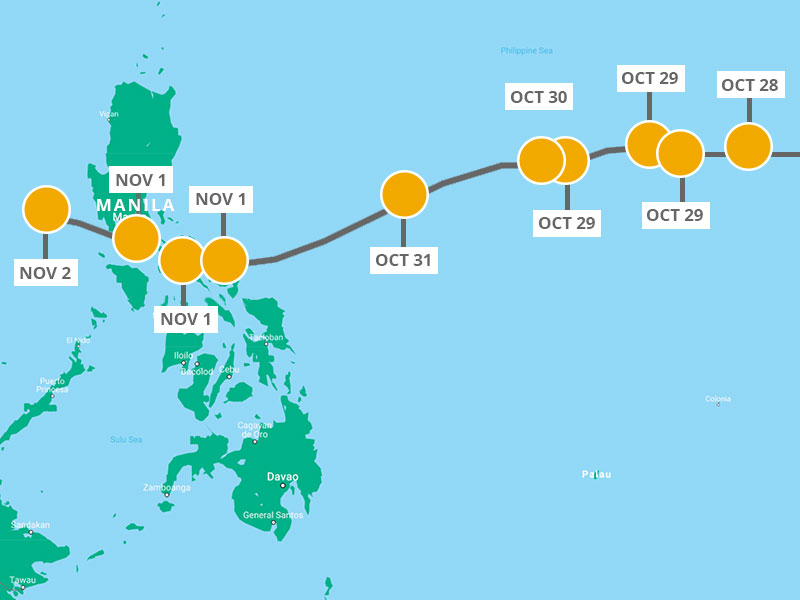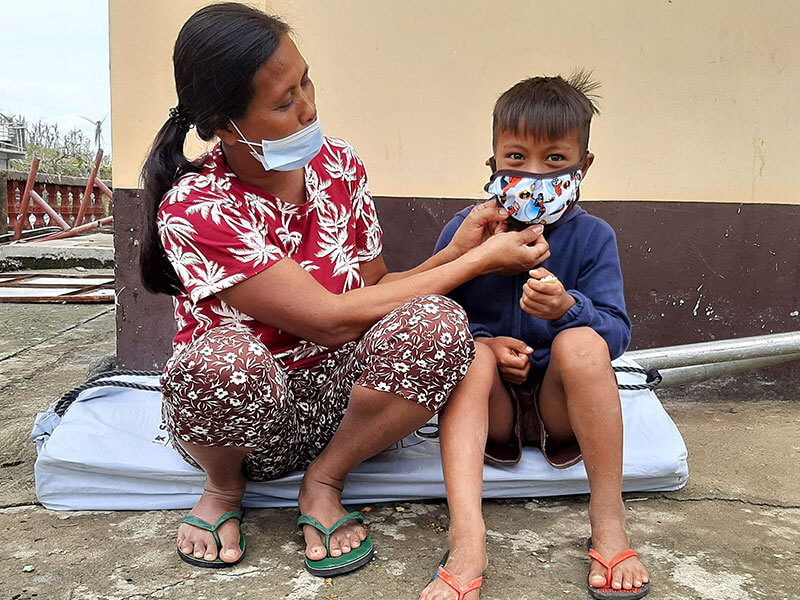ShelterBox Operations Philippines
ShelterBox Operations Philippines is a non-government organization (NGO) that aims to provide emergency shelter for families affected by disasters in the Philippines.
We have responded in the Philippines after Typhoon Goni caused destruction, landslides and extensive flooding.
The super typhoon was swiftly followed by Typhoon Vamco – the sixth named storm to hit the country in just three weeks.
It moved along a similar path to Goni and pushed response efforts back to zero as house repairs and temporary shelters were again destroyed. We have worked with our partners on the ground to support families displaced by Typhoon Goni. These devastating typhoons are a stark reminder that disasters don’t stop for coronavirus.
Read on for facts about Typhoon Goni and Vamco and see how we’ve helped.
Typhoon Goni is the most powerful storm to hit the Philippines since Typhoon Haiyan in 2003, which killed around 6,000 people and affected millions more.
It made landfall in the Bicol region. Families from Albay and Catanduanes were in the epicenter of the storm and have been the worst affected.
In Albay, lava deposits have liquefied into mud flow, burying at least 300 homes. And in Catanduanes at least 10,000 homes have been damaged or destroyed. 11 towns remain inaccessible.
The typhoon then went on to hit the town of Tiwi, causing rivers to overflow.
Take a look at this map of Typhoon Goni which details the path of the storm as it ripped through the country.

Map highlighting the path of Typhoon Goni across the Philippines.

Typhoon Goni made landfall on Catanduanes island on Sunday November 1, ripping off roofs, taking down power and damaging homes and buildings.
Around 2.1 million people were affected by Typhoon Goni across northern areas of the Philippines, with nearly 1 million forced to evacuate their homes.
Typhoon Vamco brought yet more devastation, with around 3.6 million people affected and 277,000 people living in evacuation centers.
But coronavirus made the situation even more complicated.
Our teams have worked hard to support families affected by Typhoon Goni.
We have worked with partners already on the ground, Humanity and Inclusion and Simon of Cyrene, to deliver emergency shelter.
Our supplies of shelter kits (including rope tarpaulins and nails), solar lights, water carriers, blankets and mosquito nets have reached families in some of the worst affected areas.
Rotary in the Philippines has connected us with local organizations, including the navy, and provided forklifts and trucking. Their support and network were invaluable yet again.

The Philippines is one of the world’s worst disaster-affected countries. We have responded to disasters in the Philippines more than any other country.
Warm ocean waters, low-lying coasts, poverty and geography help explain why the Philippines is so prone to disasters.
Located just above the equator, the Philippines faces the western Pacific without much else in the way to take the force of storms before they make landfall. Those warm, equatorial waters power about 20 typhoons a year.
In recent decades, significant numbers of people have been forced to live in risky, low-lying areas – havens for cheaper, temporary housing. The rapidly constructed housing and often inadequate evacuation plans mean that the local population is left vulnerable when disaster strikes. Existing houses are often unable to withstand extreme weather conditions.
On top of everything else, the country’s location on the Pacific Ring of Fire means it is prone to earthquakes, volcanic eruptions, tropical storms and typhoons.
Source: National Geographic
ShelterBox Operations Philippines is a non-government organization (NGO) that aims to provide emergency shelter for families affected by disasters in the Philippines.
Emergency shelter can save lives by slowing the spread of Coronavirus. Find out why shelter is absolutely vital right now.
Discover how we are working to help people protect themselves from coronavirus in dangerously crowded camps and disaster zones.
We’re supporting families who lost their homes and have been left vulnerable to coronavirus
Typhoon Vongfong (known locally as Ambo) swept through the Philippines in May. Torrential rains brought devastating damage, with nearly half a million people affected.